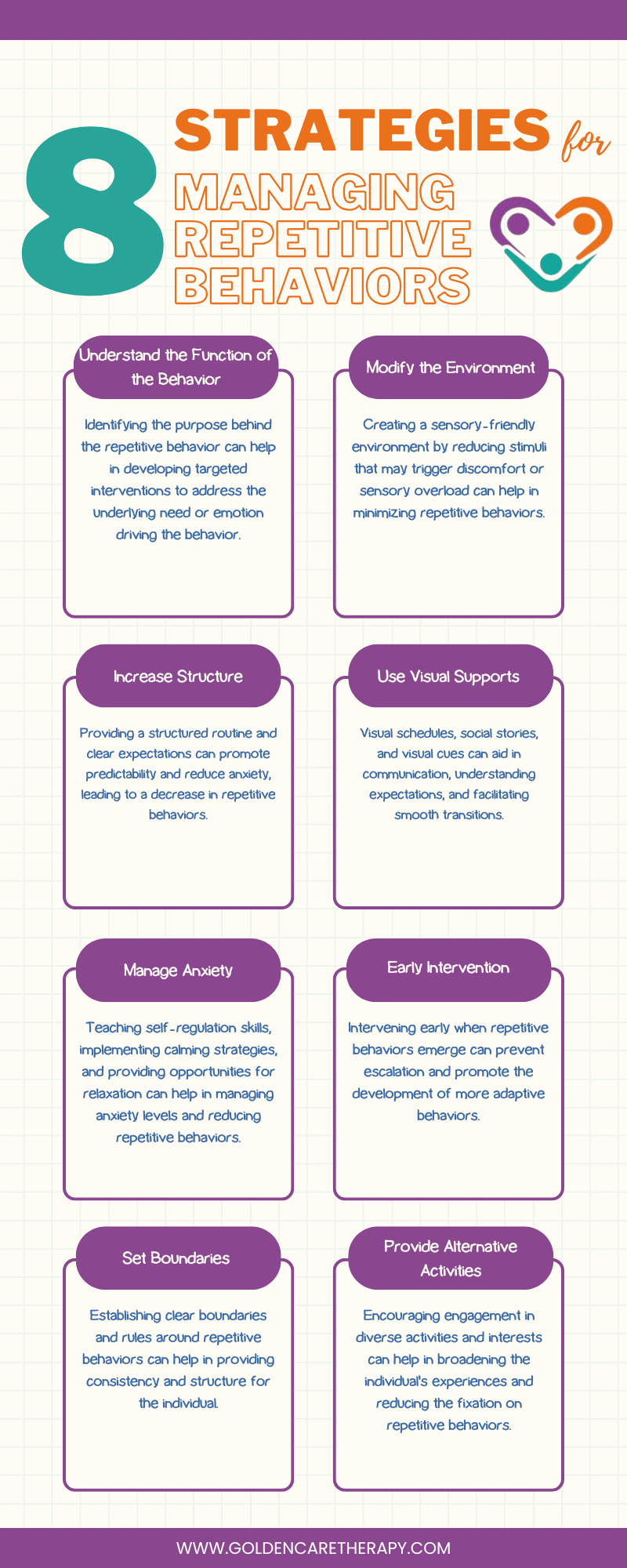
Table of Contents
Repetitive behaviors are common in autism and can take many forms. These behaviors might seem unusual to those who are not familiar with autism, but they serve important functions for those who experience them.
Whether it’s repeating certain actions, making specific sounds, or focusing intensely on particular objects or topics, these behaviors provide comfort, help manage anxiety, and offer a way to interact with the world.
Understanding these repetitive behaviors can help support individuals with autism and appreciate the unique ways they navigate their surroundings.
Types of Repetitive Behaviors
Repetitive behaviors can surface in diverse ways, and they reflect the unique characteristics of each individual. These behaviors, classified by researchers, are delineated into two main categories:
- “Lower-Order” Behaviors: These include behaviors like fidgeting, hand-flapping, and repeating words or phrases.
- “Higher-Order” Behaviors: These include a preference for sameness, routine adherence, and intense interests.
These categorizations help to differentiate between outward physical actions and more intrinsic behavioral patterns that individuals with autism may exhibit.
Repetitive behaviors in autism can manifest in a spectrum of actions, spanning from mild to severe, with varying impacts. While these behaviors may not be limited to individuals with autism, they can significantly affect social interactions and daily functioning if they become overly pronounced.
Common examples of repetitive behaviors in autism include:
- Arm or hand-flapping
- Finger-flicking
- Rocking
- Jumping
- Spinning
- Head-banging
- Complex body movements known as ‘stimming’ or self-stimulating behaviors
These behaviors often serve as coping mechanisms or self-regulatory actions, aiding individuals in managing sensory overload or stress. It’s crucial for caregivers and support systems to identify these behaviors and provide appropriate strategies to help individuals with autism navigate their daily lives more effectively.
Understanding the diversity of repetitive behaviors in autism is key to promoting awareness, acceptance, and informed support within the community. By recognizing the nuances of these behaviors and their impacts, caregivers and individuals alike can work towards creating inclusive and accommodating environments that cater to the unique needs of those with autism.
Manifestations of Repetitive Behaviors
Challenges and Management
For individuals with autism, routines play a crucial role in providing structure, predictability, and a sense of security. However, managing these routines can be particularly challenging when disruptions occur, leading to stress and anxiety.
Hence, caregivers should understand the impact of routine disruptions on individuals with autism and implement strategies to help them cope effectively.
To cope with routine disruptions, it’s essential to establish clear communication, prepare the individual in advance for any changes, provide visual schedules or cues to aid in understanding transitions, and offer support and reassurance during challenging situations.
Managing repetitive behaviors in autism requires a comprehensive approach that takes into account the function of the behavior, sensory sensitivities, and individual preferences. Here are some effective strategies for managing repetitive behaviors include:

Implementing these strategies and approaches will allow caregivers and individuals with autism to work together to effectively manage repetitive behaviors, enhance daily functioning, and improve overall quality of life.
Making small, achievable goals, providing support, and fostering a balanced approach towards engaging in interests and other activities are key to promoting positive behavior outcomes. For tailored support and guidance, consider exploring ABA Therapy in New York, New Jersey, Georgia, and Indiana from Golden Care Therapy. To learn more about how we can assist you, please contact us for more information and personalized help.
Sources:
- Video Modeling and Its Impact on ABA Learning - September 27, 2024
- Strategies for Teaching Turn-Taking in Autism - September 27, 2024
- Understanding Social Boundaries in Autism - September 27, 2024
